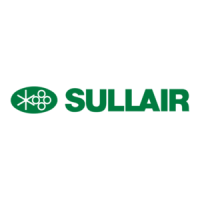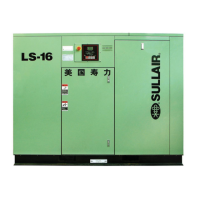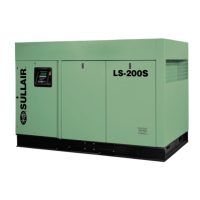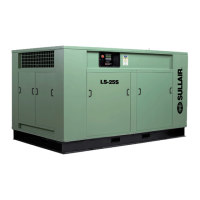Section 7
MAINTENANCE
48
NOTE ON TRANSDUCERS:
Whenever a sensor is suspected of fault, the rec-
ommended cause of action is to measure the signal
(pressure, temperature, etc.) with an alternate cali-
brated instrument and compare readings. If read-
ings conflict, the electrical and/or tubing connec-
tions should be inspected, and if no faults are evi-
dent, then replace the sensor and re-evaluate
against the calibrated instrument.
7.13 CALIBRATION
The Supervisor II has software calibration of the
pressure and temperature probes. This calibration
affects the offset but not the slope of the pressure
and temperature calculations. Because of this, the
most accurate method is to heat or pressurize the
transducer to its operating value. If this is too diffi-
cult, room temperature/open atmosphere calibra-
tion is adequate. Calibration may only be done
while machine is stopped and unarmed.
To enter calibration mode, you must press the fol-
lowing keys in sequence while in the default status
display mode: " ", " ", " ", " ",
" ". Once in calibration mode, you will see a
screen like the following:
In the above example, "0" refers to the amount of
adjustment (in psi or ºF, "97" refers to the current
value of P1).
To make adjustments, Press the " " key to
increase the value, press the " " key to
decrease the value. The number on the left will
increase or decrease always showing the total
amount of adjustment. Maximum adjustment is +
7.
The " " key exits, wiping out changes to the
current item, while saving changes to any previous
items. The " " key saves the current item and
advances to the next. All temperatures and pres-
sures may be calibrated individually.
CAL P1
097
EXCESSIVE FLUID CONSUMP-
TION (CONTINUED)
LIQUID WATER IN COM-
PRESSED AIR LINES
Excessive Fluid Foaming
Water Vapor Condensation From
Cooling and Compression Occurs
Naturally
Drain and change fluid.
Remove the water vapor from compressed
air prior to distribution through the air system.
Check operation of aftercooler and moisture
separator. Install a compressed air dryer
sized for the flow and dryness level required.
(Note: Filters may also be required to remove
particulates, liquid oil aerosols or for oil vapor
removal. Change cartridges as recommend-
ed by the filter manufacturer). Check all
drain traps routinely to insure their proper
operation. Maintain them regularly.
7.12 TROUBLESHOOTING GUIDE- SUPERVISOR II (CONTINUED)
SYMPTOM PROBABLE CAUSE REMEDY

